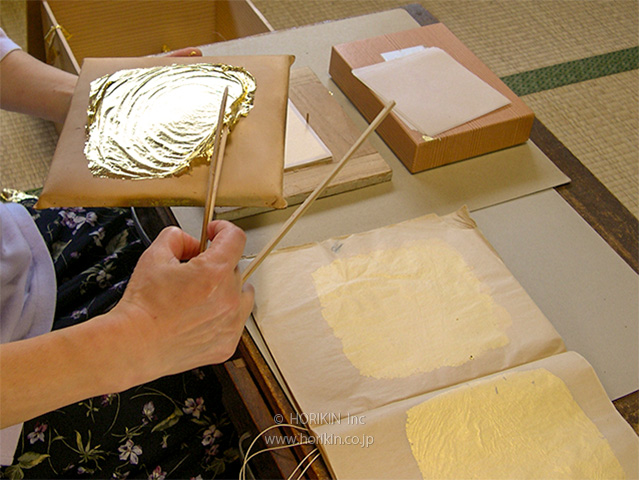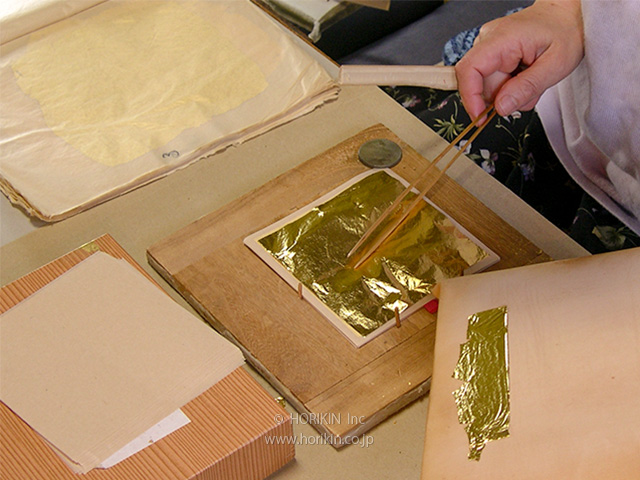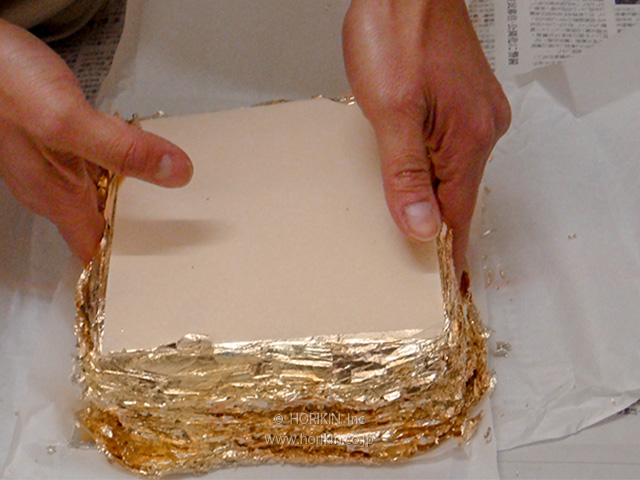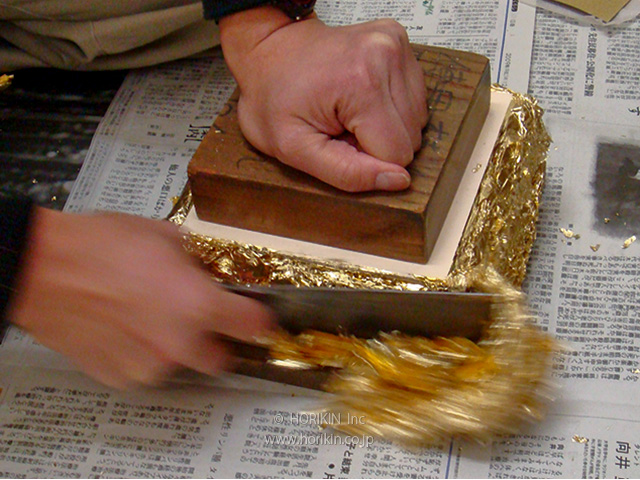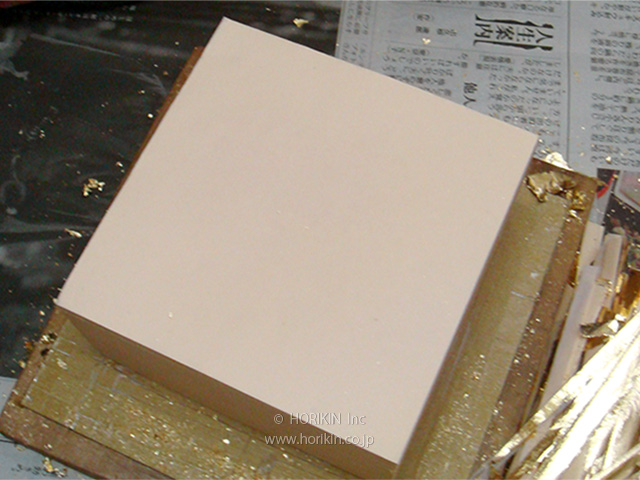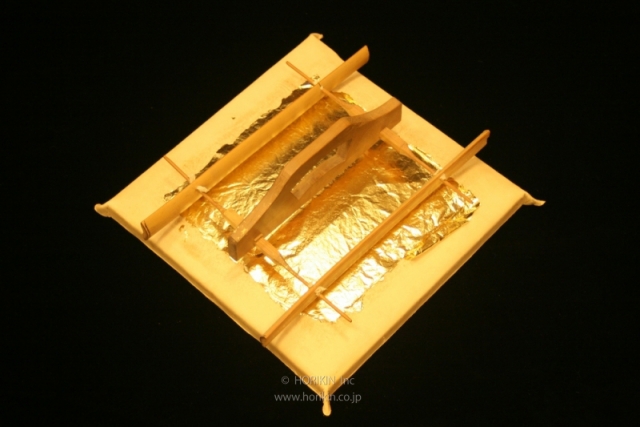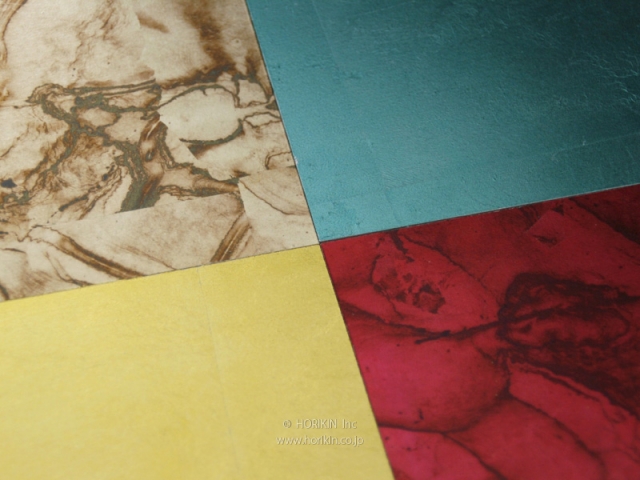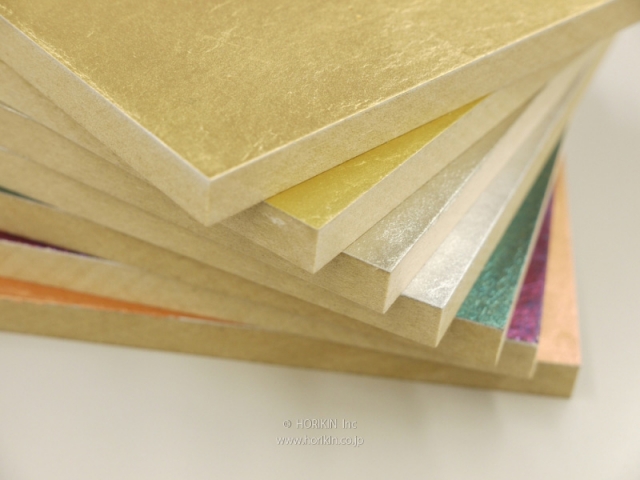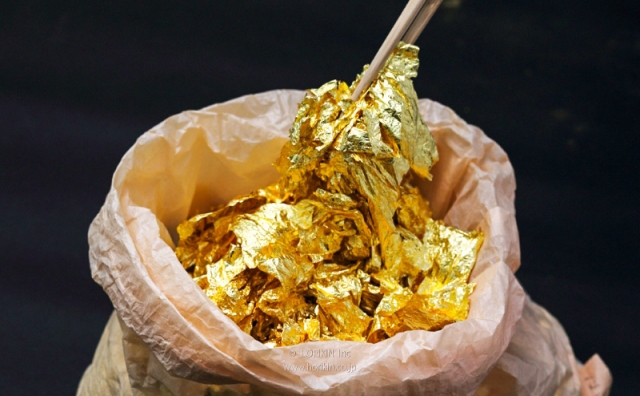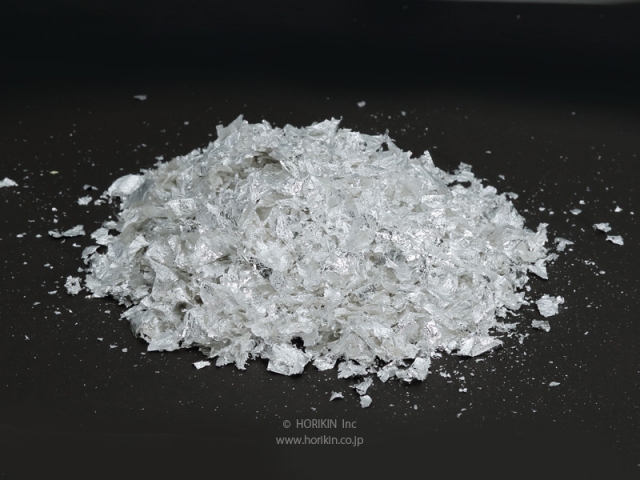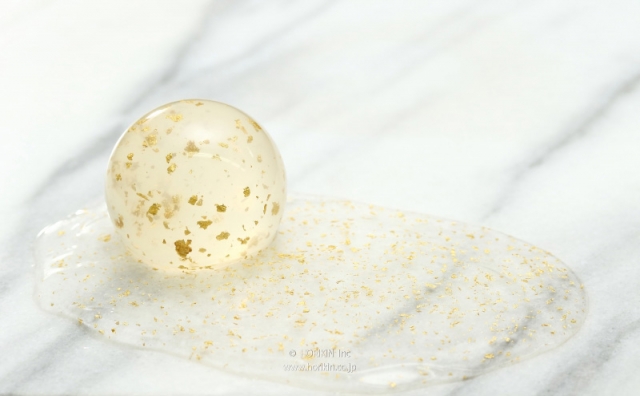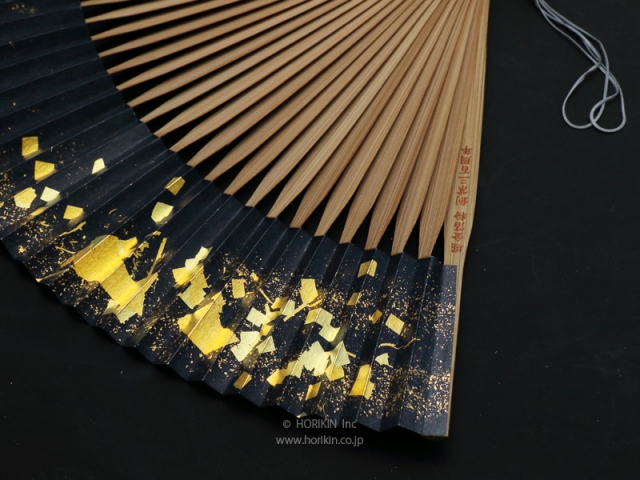Gold Leaf
Gold,Silver&Platinum leaf
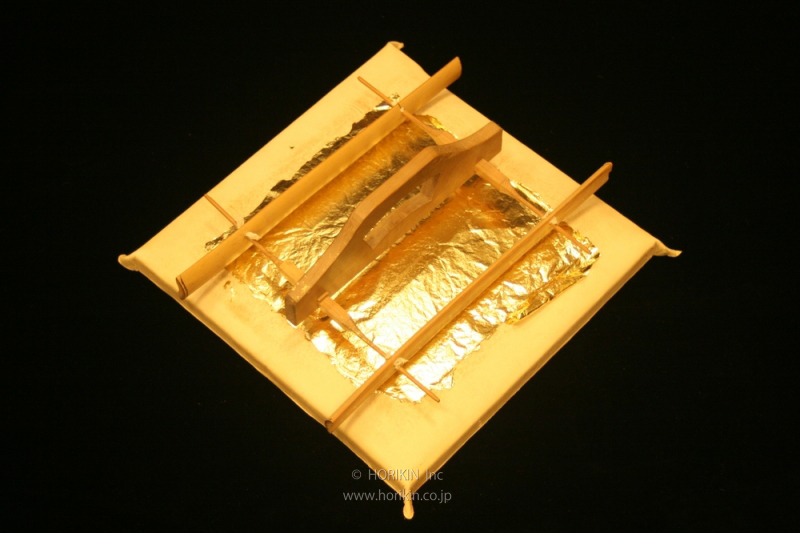
Standard
Size
Stock 109×109mm / 127×127mm
Build-to-order 158×158mm / 218×218mm
Difference in color by the ratio of contained metals.
Generally, gold leaves are not made of the “genuine gold,”which is, in definition, 99.99% of pure gold. They are usually alloy, mixed with silver and copper. Silver and copper are added to adjust the hardness of gold, as genuine gold itself is hard to be beaten.
The added silver and copper also enable the color variation within what is regarded as“gold leaves.” The high rate of gold results in reddish color, and the high rate of silver results in bluish color.
Copper also results in a different type of reddish color.
22K or higher is regarded as reddish and as the ratio of gold gets less, it gradually turns out to be blue and then white.
Differences in thicknesses
Generally, gold leaves are approximately 0.1μm in thickness.
Tachikiri (contemporary) leaves are relatively thicker than Enzuke (traditional) leaves.
(Please refer to the following section for the difference between contemporary and traditional leaves).
For both Tachikiri and Enzuke, different parts of a leaf have different thickness.
For Enzuke, the grid pattern of washi paper that the gold is beaten in between appears on the surface of leaves.
For Tachikiri, the radical pattern appears when seen through light.
Those patterns are the results of beating process.
-
Tachikiri
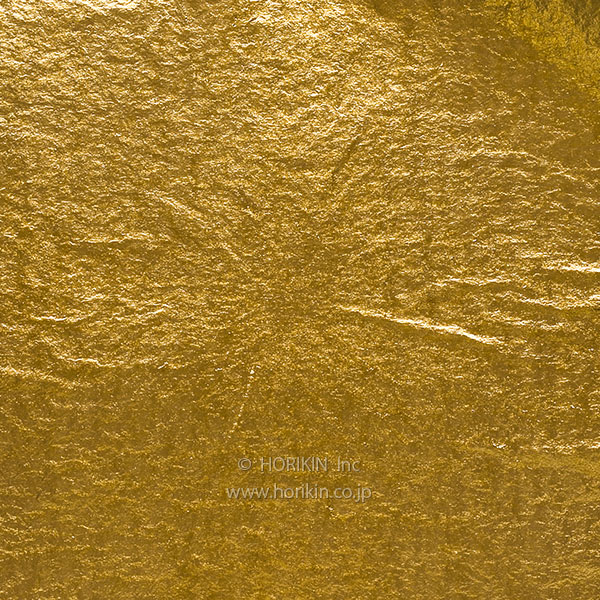
The radical pattern appears
-
Enzuke
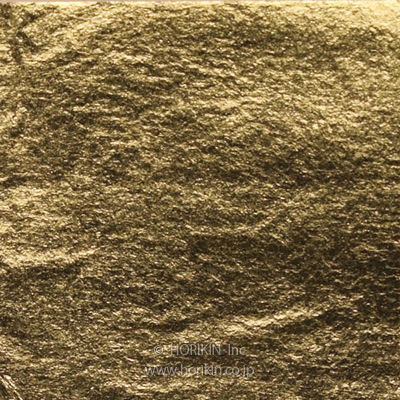
The grid pattern of washi paper
-
Types of leaves- Enzuke (traditional) and Tachikiri (contemporary)
Gold leaves are classified into two types, depending on the procedures. It is important to select the better suited one for your own project.
Traditional leaves, Enzuke
Enzuke leaves are beaten in between unique washi paper called furuya-gami. Furuya-gami, handmade washi paper mixed with special clay are essential to goldbeating. The square pieces of beaten gold leaf are placed in between paper made from Oriental paperbush.
Enzuke literally means “framed” in Japanese, as the paper looks like the frame of the gold leaves. Enzuke is relatively easier to handle, and has humble luster. It is suited for gilding the flat and smooth surface. The price is relatively higher than the contemporary ones.
Contemporary leaves, Tachikiri
Tachikiri leaves are beaten in between glassine paper. The thousands of gold leaves with random shapes, piled in between the glassine paper, are cut altogether into the square shapes. The name Tachikiri, literally means “to cut off” come from this process.
Since the base paper is the same size as the gold leaf, Tachikiri is harder to handle than Enzuke leaves.
Tachikri leaves are suited for gilding uneven surfaces, or project that seeks shiny luster. The price is more affordable than Enzuke leaves.
Product line
| KOGANE 24K | GOMOU | No1 | No2 |
|---|---|---|---|
 |
 |
 |
 |
| 109mm×109mm
|
109mm×109mm
|
109mm×109mm
127mm×127mm |
109mm×109mm
|
|
Au:99.9% |
Au:98.91% |
Au:97.66% |
Au:96.72% |
| No3 | No4 | Blue gold | Water gold |
|---|---|---|---|
 |
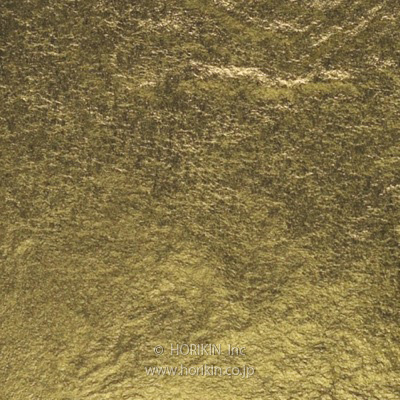 |
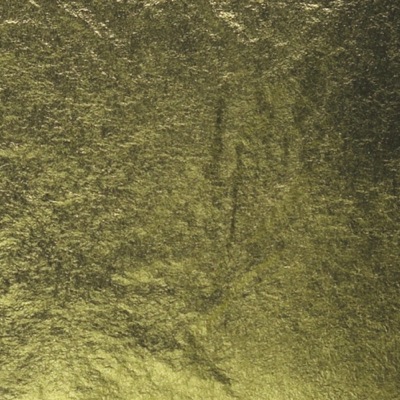 |
 |
| 109mm×109mm
127mm×127mm |
109mm×109mm
127mm×127mm |
109mm×109mm
|
109mm×109mm |
|
Au:95.79% |
Au:94.43% |
Au:75.53% |
Au:59.74%
|
| Platinum | MAIKO brand | Silver |
|---|---|---|
 |
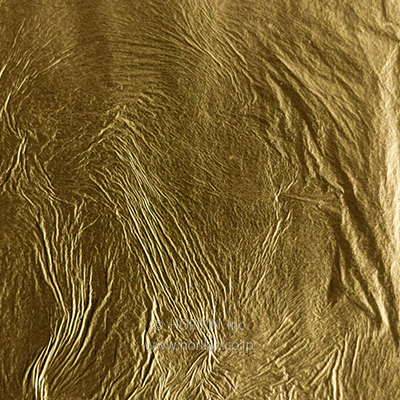 |
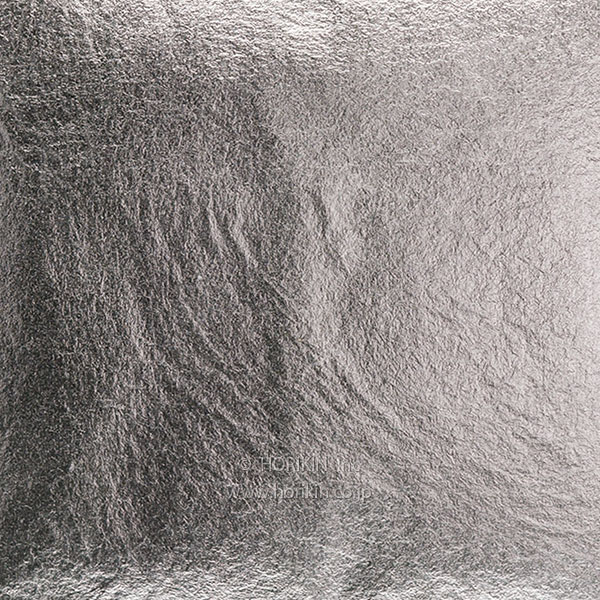 |
|
109mm×109mm 112mm×112mm |
109mm×109mm
|
127mm×127mm
|
|
Pt:99.9% |
Au:95.400% |
Ag:99.9% |
| Moon | Caplain |
|---|---|
 |
 |
| 80mm×80mm approximately 0.1μ |
80mm×80mm approximately 0.1μ |
| 【22K】 | 【19K】 |
